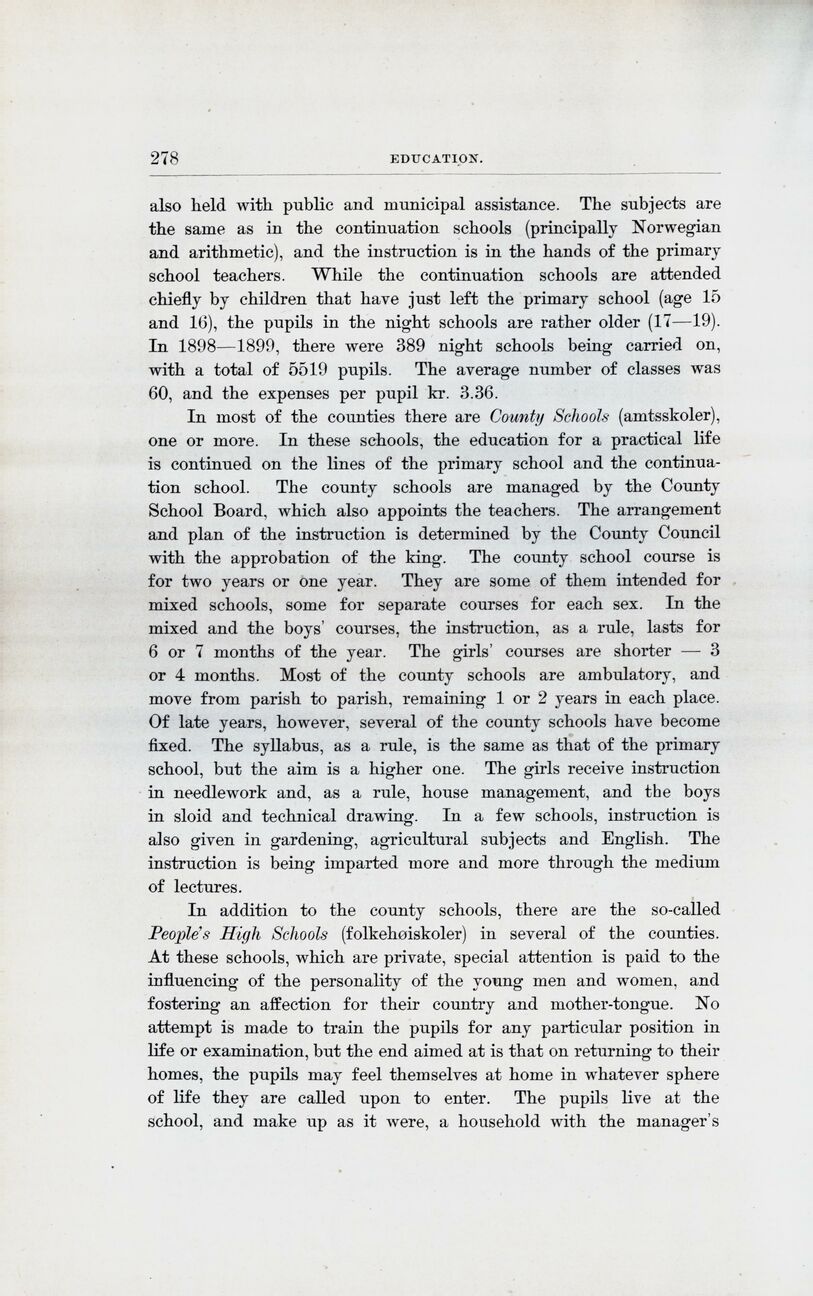
Full resolution (JPEG) - On this page / på denna sida - Education, by J. V. Heiberg

<< prev. page << föreg. sida << >> nästa sida >> next page >>
Below is the raw OCR text
from the above scanned image.
Do you see an error? Proofread the page now!
Här nedan syns maskintolkade texten från faksimilbilden ovan.
Ser du något fel? Korrekturläs sidan nu!
This page has been proofread at least once.
(diff)
(history)
Denna sida har korrekturlästs minst en gång.
(skillnad)
(historik)
also held with public and municipal assistance. The subjects are
the same as in the continuation schools (principally Norwegian
and arithmetic), and the instruction is in the hands of the primary
school teachers. While the continuation schools are attended
chiefly by children that have just left the primary school (age 15
and 16), the pupils in the night schools are rather older (17—19).
In 1898—1899, there were 389 night schools being carried on,
with a total of 5519 pupils. The average number of classes was
60, and the expenses per pupil kr. 3.36.
In most of the counties there are County Schools (amtsskoler),
one or more. In these schools, the education for a practical life
is continued on the lines of the primary school and the
continuation school. The county schools are managed by the County
School Board, which also appoints the teachers. The arrangement
and plan of the instruction is determined by the County Council
with the approbation of the king. The county school course is
for two years or one year. They are some of them intended for
mixed schools, some for separate courses for each sex. In the
mixed and the boys’ courses, the instruction, as a rule, lasts for
6 or 7 months of the year. The girls’ courses are shorter — 3
or 4 months. Most of the county schools are ambulatory, and
move from parish to parish, remaining 1 or 2 years in each place.
Of late years, however, several of the county schools have become
fixed. The syllabus, as a rule, is the same as that of the primary
school, but the aim is a higher one. The girls receive instruction
in needlework and, as a rule, house management, and the boys
in sloid and technical drawing. In a few schools, instruction is
also given in gardening, agricultural subjects and English. The
instruction is being imparted more and more through the medium
of lectures.
In addition to the county schools, there are the so-called
People’s High Schools (folkehøiskoler) in several of the counties.
At these schools, which are private, special attention is paid to the
influencing of the personality of the young men and women, and
fostering an affection for their country and mother-tongue. No
attempt is made to train the pupils for any particular position in
life or examination, but the end aimed at is that on returning to their
homes, the pupils may feel themselves at home in whatever sphere
of life they are called upon to enter. The pupils live at the
school, and make up as it were, a household with the manager’s
<< prev. page << föreg. sida << >> nästa sida >> next page >>